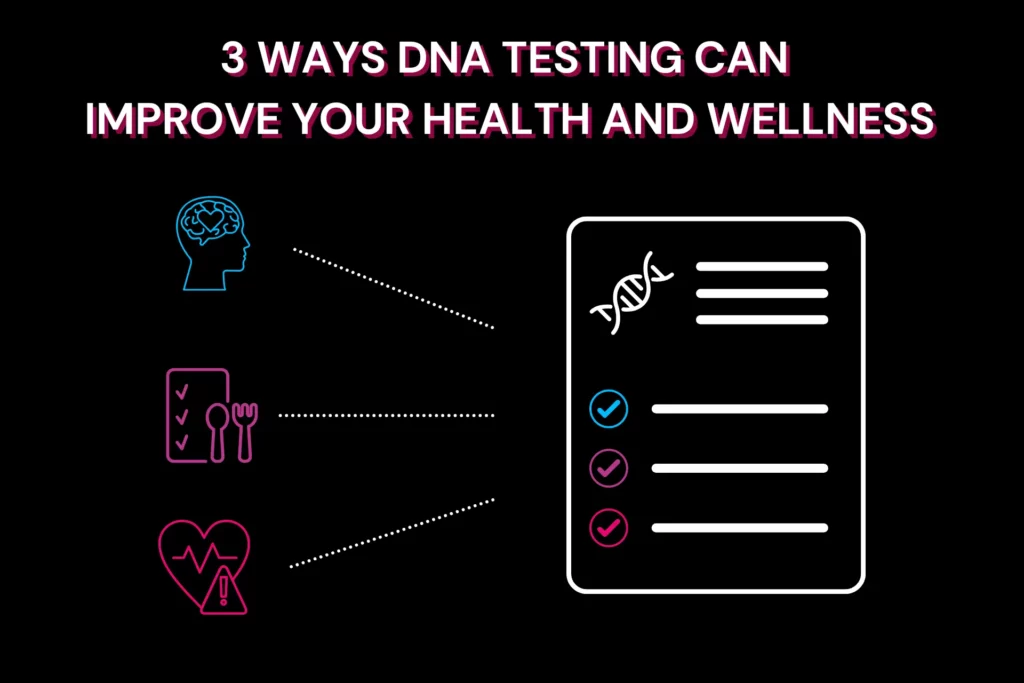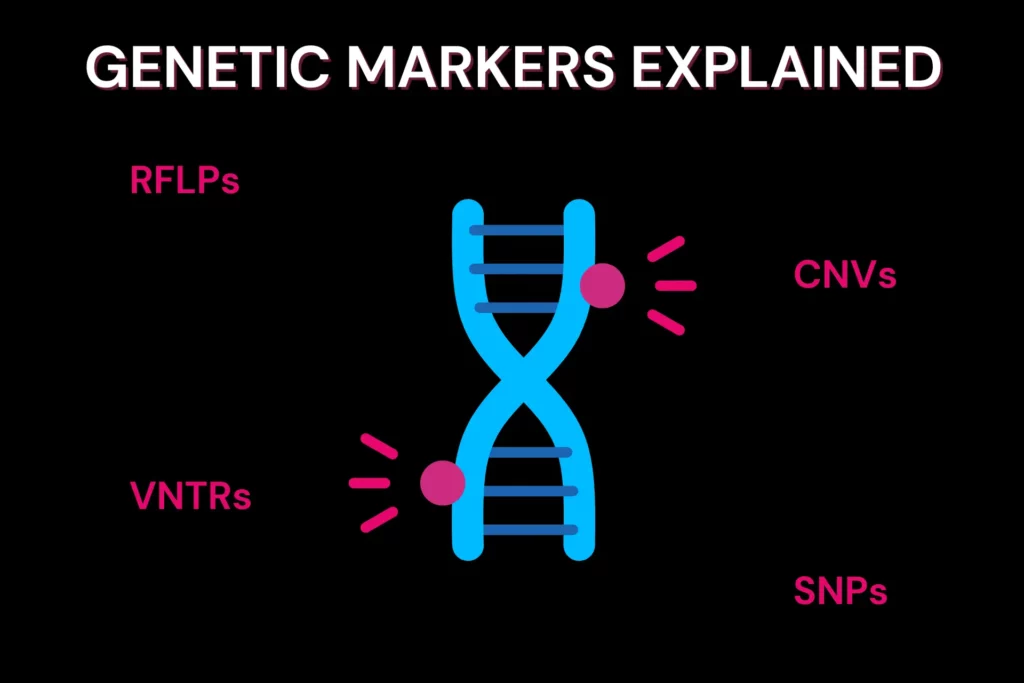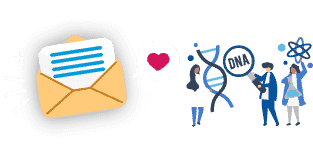Imagine a world where doctors prevent diseases before they start, rewrite faulty genes, and customize medications to your DNA. This isn’t science fiction—it’s the future of genetic testing. Genetic testing is transforming how we understand ourselves, unlocking the secrets of our DNA. From detecting inherited diseases to personalizing treatments, it’s reshaping healthcare. As science advances, we must navigate its promises, possibilities, and ethical dilemmas too.
A Brief History Of DNA Testing
From basic biological tools to advanced genetic sequencing, human identification has come a long way.
Before DNA testing, scientists relied on methods like blood typing and serological testing, which could indicate relationships but lacked precision.
The evolution of DNA analysis has transformed forensic science, paternity testing, and ancestry research.
Early methods: Blood typing, serological analysis, and HLA testing (1920s–1970s)
- 1920s: ABO blood typing – Scientists discovered four major blood groups (A, B, AB, and O), helping with medical transfusions and basic parentage identification. However, this method lacked accuracy in confirming biological relationships.
- 1930s: Serological analysis – Additional blood group systems like Rh, Kell, and Duffy improved identification but could only indicate if two people were unrelated. They couldn’t definitively confirm a biological relationship
- 1970s: HLA testing – Scientists identified Human Leukocyte Antigen (HLA) markers, which increased the accuracy of relationship testing. When combined with ABO and serological testing, it achieved around 90% accuracy but was still not definitive.
The rise of DNA testing (1980s–2000s)
- 1980s: RFLP DNA testing – The first DNA-based test, restriction fragment length polymorphism (RFLP), provided more precision than previous methods. However, it required a large DNA sample and had a long turnaround time.
- 1990s: PCR DNA testing – Polymerase chain reaction (PCR) revolutionized DNA testing by requiring only small samples for quicker results. This method targets short tandem repeats (STRs) in DNA, providing over 99.99% accuracy in paternity and forensic cases.
- 2000s: SNP arrays – Scientists developed single-nucleotide polymorphism (SNP) arrays. These allow ancestry tracing, genetic health insights, and personalized medicine beyond simple identity verification.
The NGS revolution (2010s- present)
Next-generation sequencing (NGS) has revolutionized DNA testing, enabling high-precision sequencing and expanding its applications.
A key development made possible by NGS is a safer, more straightforward alternative to paternity testing.
Non-invasive prenatal paternity (NIPP) testing can analyze a maternal blood sample as early as 7 weeks into pregnancy.
The Current State Of DNA Testing
Currently, DNA testing is extensively employed in various fields, including forensics and paternity testing.
It helps solve criminal cases by matching DNA evidence from crime scenes to suspects.
In paternity cases, it helps confirm biological relationships between fathers and children.
Beyond forensics, DNA testing is used in medical areas like bone marrow and organ transplants.
It helps doctors check if a transplant is successful and if the body accepts the new cells or organs.
DNA tests can also identify the origin of tumors after a transplant, determining whether they are from the donor or the recipient.
Techniques
DNA testing uses advanced techniques like PCR (to make copies of DNA), DNA sequencing (to determine the exact sequence), and STR analysis (to create unique DNA profiles).
These methods enable accurate and efficient DNA analysis for various applications. The article also discusses the several technologies involved.
Accuracy
DNA testing accuracy today is remarkably high, reaching up to 99.99%.
The accuracy depends on the number and quality of genetic markers analyzed during the test.
Technological advances have also improved DNA testing’s ability to work with smaller or degraded samples while maintaining high precision.
Coverage
A DNA test looks at your genetic makeup to identify changes in your genes, chromosomes, and proteins. It helps detect genetic conditions or risks, such as:
- Genes: Identifies mutations in specific genes that may cause or increase the risk of genetic disorders.
- Chromosomes: Looks for chromosome changes, like extra or missing ones, which can cause genetic conditions.
- Proteins: Analyzes protein levels or activity to detect genetic issues.
The decision to take a DNA test is personal and should be discussed with a genetic counselor or geneticist, as it has both benefits and limitations.
Accessibility/Cost
DNA testing is becoming more accessible, with varying costs depending on the type of test and purpose:
- Paternity test (home collection): $130 to $200
- Paternity test (for legal use): $300 to $500
- Ancestry DNA test: $49 to $200
- Specialized ancestry tests: Prices may exceed $200 depending on the information provided.
Emerging DNA Testing Techniques
Ongoing developments in DNA testing are enhancing capabilities in health, ancestry, and forensic science, with the latest techniques outlined below:
- NGS: Analyzes millions of DNA segments simultaneously, making testing faster, cost-effective, and ideal for disease diagnosis, personalized medicine, and large-scale genomic studies.
- Single-cell DNA sequencing: This technique studies genetic variations at the cell level, which is crucial for understanding processes like cancer, immune responses, and embryonic development.
- Forensic genealogy: Genetic databases and genealogical records are used to identify relatives, solve unsolved crime cases, and locate missing persons.
- SNP analysis: Detects genetic variations in DNA sequences, useful for ancestry tracing, disease risk prediction, and understanding genetic differences.
- DNA phenotyping: Predicts physical traits like hair color and eye color from DNA, assisting in suspect identification in forensic investigations.
- Microfluidic-based DNA analysis: Microfluidic devices are used for quick, portable testing with small DNA samples, which is ideal for on-site diagnostics and field research.
- Quantitative PCR (qPCR) and droplet digital PCR (ddPCR): qPCR measures DNA quantity; ddPCR increases sensitivity by dividing samples into droplets to detect rare DNA and gene variations precisely.
- CRISPR-based diagnostics: The CRISPR-Cas system precisely targets DNA or RNA sequences, enabling rapid, accurate detection of genetic disorders and infections.
- Cytogenetics: Karyotyping and Fluorescence in situ Hybridization (FISH) techniques detect chromosomal abnormalities in cytogenetics.
Karyotyping analyzes chromosome number and structure, while FISH uses fluorescent probes to identify specific DNA sequences.
- Microarrays: This technique analyzes DNA to detect duplications, deletions, or large identical DNA stretches that can cause disease.
It examines all chromosomes simultaneously, detecting changes smaller than those identified by karyotyping or FISH.
The Future Of Genetic Testing
The future of genetic testing looks very promising and is set to change how we treat medical conditions.
With ongoing advancements, genetic testing will soon replace traditional methods of prognosis prediction, enabling more precise and personalized treatment plans.
One of the most exciting possibilities is creating customized treatments for patients who are most likely to benefit, reducing unnecessary therapies and improving results.
As technology advances, genetic testing will help detect more disorders and give us a better understanding of complex diseases, like various forms of cancer.
Researchers are also progressing in mapping genetic variations that could provide crucial insights for future therapies.
This progress will help guide the next generation of clinical research, offering hope for more effective solutions and improved patient care.
Innovation At Xcode
DNA testing is constantly evolving, and it’s important to match this pace.
Accessibility is the key to meaningful innovation, and this is where Xcode shines.
Xcode is currently able to accurately and comprehensively analyze genetic data from over 50 raw DNA data providers.
We deliver some of the most affordable DNA reports on the market within just 24 hours of ordering.
Xcode’s blog is regularly updated with informative, engaging articles on the latest scientific trends.
This reflects our dedication to innovation as well as universal accessibility in the field of genetic testing.
FAQs About The Future Of Genetic Testing
Is Genetic Testing Becoming More Popular?
The adoption of genetic testing has significantly increased, particularly over the last two decades.
The number of genetic tests registered in the United States has grown dramatically, with 129,624 tests listed as of November 2022.
Globally, the number is even higher, reaching 197,779 tests.
This growth is primarily driven by clinical tests, with over 90% of tests used for diagnostic purposes.
The number of new genetic tests made available yearly has also grown, from 607 new tests in the US in 2012 to 3,097 in 2022.
On a global scale, new genetic tests grew from 1,081 in 2012 to 6,214 in 2022.
Most of these tests aim to diagnose conditions rather than research, demonstrating the growing role of genetic testing in healthcare.
Why Do People Decline Genetic Testing?
Even though genetic testing holds significant value for understanding genetic conditions, many people choose to decline.
The following are some key reasons why:
- Concerns about privacy and confidentiality: Many individuals worry about how their genetic data will be stored and used, leading to a fear of privacy breaches.
- Fear of discrimination: The potential for genetic test results to affect insurance coverage, employment opportunities, or personal relationships is a significant concern.
- Psychological impact of results: Some people fear the emotional burden of knowing they carry a gene for a serious illness, especially when there are no immediate health implications.
- Lack of perceived benefit: If individuals don't see a direct benefit to their health or well-being, they may not know the value of undergoing genetic testing.
- Social judgment risks: Certain genetic conditions revealed by genetic testing may provoke social judgment, especially in communities with strong negative biases toward these disorders.
- Unexpected or secondary findings: In genetic research, discovering information unrelated to the original reason for testing, such as future health risks, can cause anxiety and uneasiness.
- Carrier status concerns: Some decline genetic testing to avoid learning about carrier status for conditions that are not immediately relevant to their current health or reproductive decisions.
How Close Are We To Gene Editing?
We are making significant progress towards gene editing, with CRISPR-Cas9 technology leading the way.
This system enables scientists to edit DNA with great accuracy, and it has already been applied to plants, animals, and human cells in research.
The ability to use gene editing to eliminate or treat genetic diseases, such as sickle cell anemia and cystic fibrosis, is within reach.
Right now, gene editing is mainly used for research, but there is potential for it to be used in clinical treatments in the future.
Specifically, it could prevent genetic disorders from being passed to future generations.
While gene editing is not yet a routine part of medical treatments, its rapid development suggests it could soon play a key role in fighting genetic diseases.
Summary: The Future Of Genetic Testing
- Genetic testing has advanced from basic methods like blood typing to more precise techniques like PCR and DNA sequencing.
- It's widely used in forensics, paternity tests, and medical fields, such as organ transplants and tumor analysis.
- Emerging technologies like CRISPR-based diagnostics are improving disease detection and enabling personalized treatments.
- Xcode stays at the forefront of this innovation, offering quick, affordable genetic reports.
- Genetic testing is growing in popularity, mainly for diagnosing health conditions, but some still avoid it due to privacy concerns or fear of discrimination.
Others Are Also Reading

3 Ways DNA Testing Can Improve Your Health And Wellness

Genetic Markers Explained

Genes vs. Lifestyle: Striking The Right Balance
References
https://dnacenter.com/history-of-dna-testing
https://pmc.ncbi.nlm.nih.gov/articles/PMC1200713
https://www.nature.com/scitable/topicpage/paternity-testing-blood-types-and-dna-374
https://medlineplus.gov/genetics/understanding/testing/genetictesting
https://dnacenter.com/blog/how-much-does-a-dna-test-cost
https://pmc.ncbi.nlm.nih.gov/articles/PMC10376292
https://cellandbioscience.biomedcentral.com/articles/10.1186/s13578-019-0314-y
https://www.sciencedirect.com/science/article/abs/pii/S0379073819302014
https://medlineplus.gov/genetics/understanding/genomicresearch/snp
https://pmc.ncbi.nlm.nih.gov/articles/PMC6976916
https://www.mdpi.com/2227-9040/6/4/43
https://pmc.ncbi.nlm.nih.gov/articles/PMC6240714
https://www.nature.com/articles/s41551-021-00760-7
https://www.testing.com/genetic-testing-techniques/
https://pmc.ncbi.nlm.nih.gov/articles/PMC10142561




